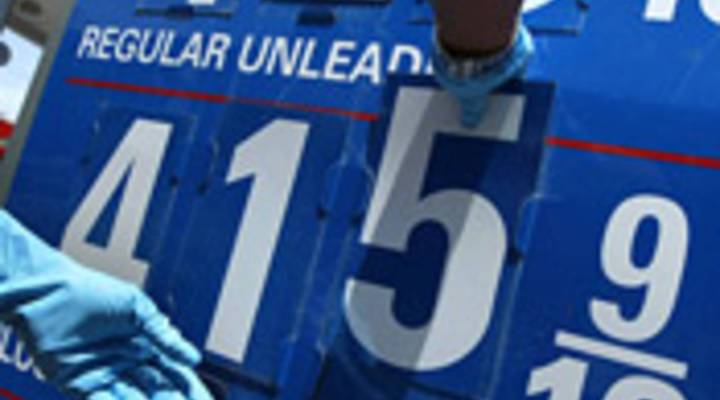
The math at the pump

TEXT OF INTERVIEW
Tess Vigeland: Premium’s going for $4.99 a gallon at the station up the street from us here at Marketplace. No doubt we will cross that $5 barrier before Independence Day. Mass transit systems are reporting record ridership as drivers flee their cars.
But how exactly did we reach this point? And what exactly goes into that per-gallon price tag?
Here to explain is Severin Borenstein, Director of the University of California Energy Institute.
Welcome back to the program.
Severin Borenstein: Thanks for having me back.
Vigeland: You have watched oil prices for years. You’ve studied this. Can you make heads or tails of why we have seen a doubling in the price of a barrel of oil just in the last six, eight months?
Borenstein: Yeah, I think there is actually a pretty straightforward market story about what’s happened, not just in the last year but over the last five years. Five years ago, we had prices down in the $20-30 a barrel range and demand was growing pretty strong and supply was keeping up with it. But supply stopped growing nearly as quickly and what we have seen over the last five years is demand has continued to move forward on a worldwide basis and supply hasn’t. And so the only way you can make that market clear with a limited supply is for price to go way up. So we’ve got people buying slightly more oil than they were buying a year ago and paying twice as much. But if the price were still $60 or $40 a barrel, there’d be way too much demand and the market wouldn’t be able to supply it.
Vigeland: I guess I can understand that on a months and years basis, but let me ask you about what happened a couple of weeks ago. We had a two day spike of $16, $17 dollars a barrel where we went up to $140 a barrel. How does that happen in two days, because there’s no way you can argue that all of a sudden, over those two days demand went up and supply went down?
Borenstein: No, that clearly isn’t a supply and demand story in the typical sense, but the market is constantly trying to catch up with what’s really going on and sometimes the market figures out demand is stronger than they thought or there’s less supply than they thought. Often these sorts of spikes occur around either announcements of changes in inventories or political events that are going to change the available supply and those are the sorts of things that have always rattled the market a little bit, but when you’re in a very tight market to begin with then suddenly if you have a little more demand relative to supply, you’re likely to see a big price spike.
Vigeland: Why is it that gasoline prices seem to go up automatically when the price of a barrel of oil goes up. When refiners are buying that oil, isn’t that for three months out from now?
Borenstein: Well, the refiners are buying oil for a month or two in advance, but when they sell gasoline, they have to replace that by refining more oil, so the real value of that gasoline, the real cost of selling that gasoline is what it’s going to cost to replace it. It’s no different than if you buy a house. When you go to sell it, what you bought that house for is not relevant; what matters is the supply/demand balance for housing when you go into the market to sell your house and the oil companies do the same thing when they are selling the refined products.
Vigeland: Is it possible to calculate what we all could potentially have to pay per gallon if oil prices stay the way they are?
Borenstein: The way you translate it is every time the price of oil goes up by $1 a barrel, that shows up at the pump as about 2.5 cents a gallon. So at $130 a barrel, the price of just the oil going into the gasoline is over $3 a gallon. So you’re just starting from there; you add on the taxes, you add on a little for the retail dealer and you’re quickly up and over $4 a gallon. As long as oil prices stay in the $130 range, we’re going to see gas prices over $4 a gallon nationwide.
Vigeland: And if you look into your crystal ball, is that going to stick with us?
Borenstein: The best predictor that I know of is the futures market for oil and what its saying is that these prices are likely to stay at this level for a long time to come. Now that’s not a great predictor, they’re often wrong too, but these are traders that have their own money on the line and it’s probably a better guess than any one pundit. $130, $140 oil is likely to be a real price for a long time to come.
Vigeland: Severin Borenstein is director of the University of California Energy Institute at Berkeley. Thanks so much.
Borenstein: Thanks a lot.
There’s a lot happening in the world. Through it all, Marketplace is here for you.
You rely on Marketplace to break down the world’s events and tell you how it affects you in a fact-based, approachable way. We rely on your financial support to keep making that possible.
Your donation today powers the independent journalism that you rely on. For just $5/month, you can help sustain Marketplace so we can keep reporting on the things that matter to you.


















